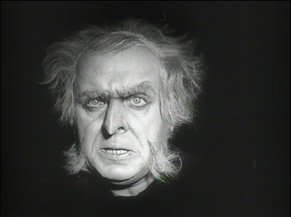Chapter Two:
The Testament of Dr. Mabuse
By Brett Beach
January 6, 2011
“Keaton always said, ‘I don’t believe in God, but I’m afraid of him.’ Well, I believe in God and the only thing that scares me is Keyser Soze.”
If Roger “Verbal” Kint had ever encountered German super villain Dr. Mabuse, he might have felt compelled to alter his statement. Featured in five novels and over twice as many features since his first appearance in the 1920s, Mabuse stands as a direct forebear to any number of evildoers over the last near-century: from the world of comic books (Lex Luthor) to Ian Fleming’s spy novels (Dr. No and Blofeld) to parodies of the same (Dr. Evil) and even to singular personifications of evil (Dr. Lecter), Mabuse is the archetype by which all those who desire world domination and/or destruction should be measured.
Director Fritz Lang in three separate features released in 1922, 1933, and 1960 brought Mabuse’s most infamous exploits to life. During a 15- year stretch from the late ‘10s to the early ‘30s that included the first two Mabuse epics, Lang also directed such classics as The Cabinet of Dr. Caligari, Metropolis and M, while living in Germany. After the second Mabuse film was banned at the time of its completion by the German government, Lang fled to America and a new career in Hollywood. He did not return until 25 years later for what would prove to be his final film as director.
I watched the first and second features in Lang’s trilogy - Dr. Mabuse the Gambler and The Testament of Dr. Mabuse - for the first time this past week. I have not yet seen The 1000 Eyes of Dr. Mabuse, though I soon hope to remedy that. Even so, with a little knowledge of the plot of the latter film, it is fascinating to me to chart progression in the three films, from silent black and white (accompanied by an original score on the 2001 Kino Video edition DVD) to sound black and white to Technicolor; the transformation of Mabuse from a seemingly omnipotent (though still flesh and blood) leader of the criminal underground to a ghost in the machine able to manipulate actions from beyond the grave and remain unchallenged in a quest to establish an “empire of crime” that will collapse the world in anarchy and violence; and running times that vary considerably (esp. in the multiple versions of the first two films) but that as a rule wind down from the epic serial nature of the first (around four-and-a-half-hours) to the slightly more manageable 99 minutes of the third.
As aware as I have been of Lang’s Mabuse films, they have conspicuously remained filed away in my internal Movie Viewing Directory under the heading of Classic Cult Films I Somehow Always Seem to Put Off Until Tomorrow. (I would also slide under this quite bulging and unwieldy header two movies about Hollywood in the ‘30s, The Last Tycoon and The Day of the Locust, that I was always waiting to view until I had read the F. Scott Fitzgerald and Nathanael West novellas on which they were respectively based. With that accomplished over the past month, my excuses for avoiding them have run out.)
Continued:
1
2
3
4
|
|
|
|

![]() Tweet
Tweet
![]() Print this column
Print this column



